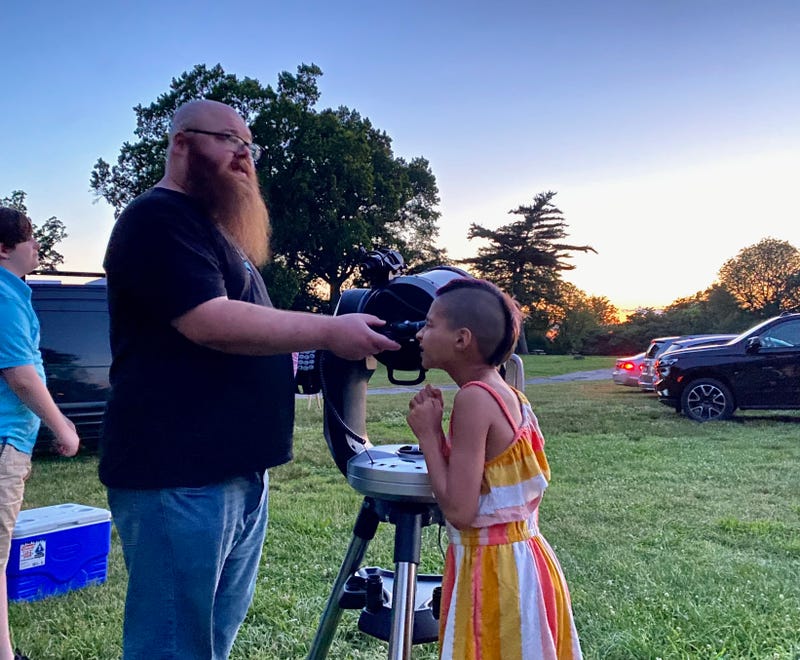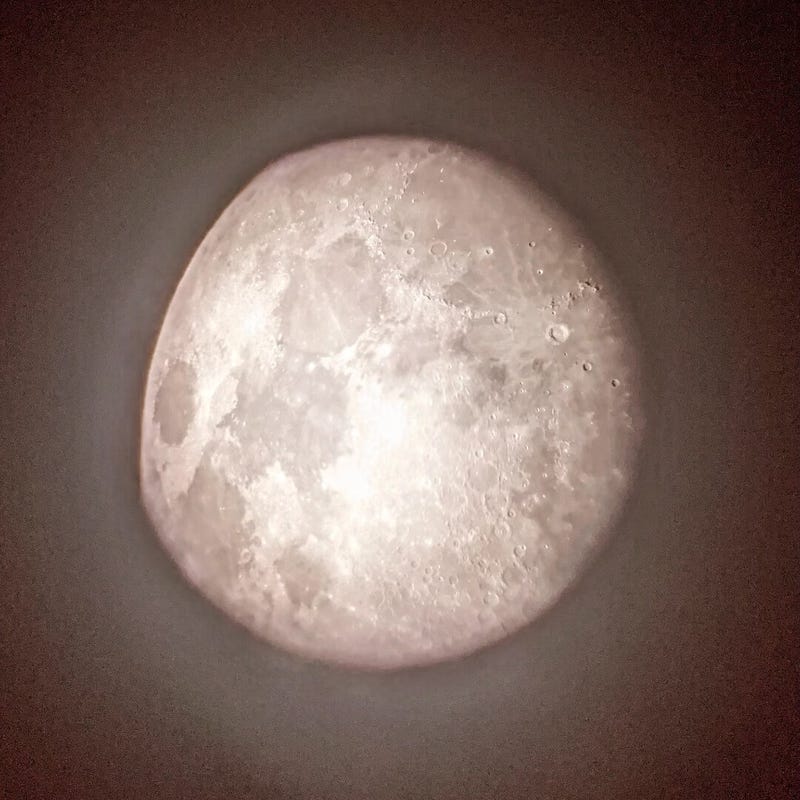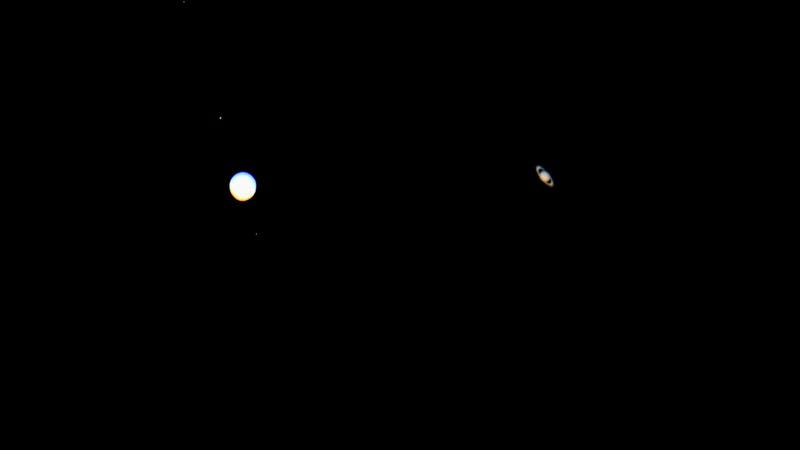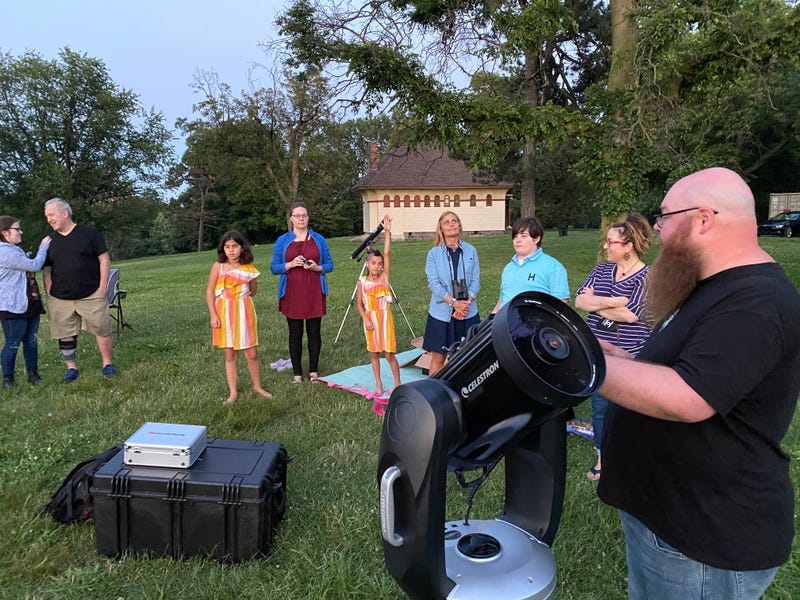
This edition of “Into the Wild” takes us out of this world, as KYW's John McDevitt joins a moonwalk and stargazing outing in Fairmount Park.
PHILADELPHIA (KYW Newsradio) — The light of the moon guides us on a nighttime walk near Lemon Hill Mansion in Fairmount Park. Astronomy instructor Buddy Muhler speaks over the song of crickets.
"Take 30 seconds. Take 40 seconds,” he said, “and just stand there and stare straight up at the sky and just soak it all in for a bit."
It's one of the things Mulher says he likes to do before getting started on his full-moon hike and stargazing tour — just to have everybody stop and appreciate a nice, crystal-clear sky.
"Everybody knows what the night sky looks like, even in the city. There's a black background with a bunch of dots, right?"
He asks: How often do we take a moment to really look up at these objects and think about what they are, where they are and why they’re there? So familiar they seem, like anyone could just reach up and touch them.
“When in reality, you know, some of these objects are not just ‘so far away’ — but they're so far away that some of these objects may not even exist anymore — and we don't even know it yet. It's really truly mind blowing just how far away things are in space."
Related
It doesn't cost much
Muhler wouldn’t call himself an official astronomer — “I would say a backyard astronomer,” he says — but his high-power telescope betrays his expertise and experience.
"The telescope that I have … it’s an 8-inch reflecting telescope. So it has a mirror instead of a lens," he said.
But here's the thing, Muhler says: “You don't need a super fancy telescope to be able to see the rings of Saturn or the moons of Jupiter. … Absolutely you don't have to go breaking the bank on a telescope just to be able to see some cool things like that."

But the focus, for the rest of the outing, is on the planets and stars in the night sky.
“Almost every single night of the year, if it's clear, you can see almost all of the cool things,” Muhler said. “You just have to be willing to possibly stay up till four or five in the morning.”
The things he’s talking about on this hike near Lemon Hill are celestial bodies visible in the evening sky, when the average person is actually going to be awake. Later in the fall, as the sun sets earlier, the evening tours shift a little earlier.
The objects of his reflection
He says there are seven main targets he’s looking for across the calendar year that light pollution from the city doesn’t wash out: the planets Venus, Mars, Jupiter and Saturn; the moon; the Orion Nebula; and a double-star called Albireo.
When looking at actual stars, even through a high-powered telescope, the vast majority simply look like a slightly larger dot. “So looking at them through a telescope, versus just straight up in the sky with your own eyes isn't much of an advantage,” he said.
“Whereas, say like, when you look at Saturn — it goes from looking like a dot in the sky to actually looking like the planet Saturn, straight up out of a book, where you can literally see the rings around the planet. Or with Jupiter, you can see the stripes on Jupiter, and you can see the four Galilean moons.”

The moon is, of course, always visible, Muhler says. And there are only two objects outside of our solar system that he ever really looks for:
Albireo looks like a very dim star to the naked eye, Muhler said. “But then, when you look at it through the telescope, it's actually a double-star. It's actually two stars. And they're two different colors. One is a golden yellow. One is a nice, bright blue. And so you see it, they're actually side by side in the telescope.
“The other one is called the Orion Nebula. Actually, the Orion Nebula is so bright, that if you are out in super, super dark skies, you would almost be able to see it with the naked eye without a telescope. But it's a nebula, which is an area of space where … either stars or planets are actually born. It's a super huge area of dust. And as that dust collects and pulls together, that's actually where stars are formed.”
This week: The moon, Mars and maybe Saturn
Katya Solovyeva of South Philly has gone on the hikes several times.
"There is a spiritual element to it for sure. It does teach you to see the scale and just the vastness of it all. And it's just so unimaginable for a human being, to think about space and how far these objects are, it's really a different way of looking at the universe and what's around you even."

The Fairmount Park Conservancy offers the outings throughout the year. Tickets are on a pay-what-you-can scale — $10, $15 or $20.
The next one on Tuesday, starting at 8:30 p.m. and going to 10:30 p.m.
“This Tuesday, first of all, the moon is always the main target of the night,” Muhler said. “We may look at Mars just a little bit, as it’s setting. Depends on what time the group gets back. And we may get a chance to see Saturn as it is rising. However, going into September, for sure September, we'll definitely be looking at Saturn.”
More information can be found at MyPhillyPark.org.


